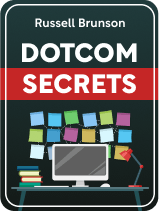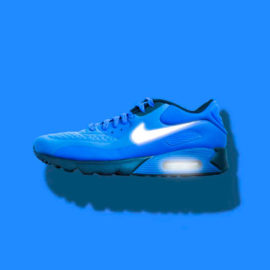

This article is an excerpt from the Shortform book guide to "Dotcom Secrets" by Russell Brunson. Shortform has the world's best summaries and analyses of books you should be reading.
Like this article? Sign up for a free trial here.
What exactly is a sales funnel? What are the steps involved in building a sales funnel that converts?
A sales funnel is a preset path that gets customers to invest more in your product. According to Russel Brunson, the author of Dotcom Secrets, an effective sales funnel consists of three steps: catching your customer’s attention, demonstrating the value of your product, and getting them to buy with a compelling call to action.
Let’s dive into each of the three sales funnel steps in a little more detail.
#1: Catch the Audience’s Attention
First, Brunson states that every page in your sales funnel needs to seize the reader’s attention: Before you begin pitching your product to the audience, make sure they want to listen. Thus, every part of your sales funnel should feature a single element that’s so visible and intriguing that your reader can’t help but pay closer attention to the rest of your message. For instance, this could be a large text headline or a striking image.
There’s no need to describe any specifics about your product during the first sales funnel step. Rather, make it clear that you can fulfill a specific desire or solve a specific problem that your reader has. For example, if you want website visitors to enter their email addresses in exchange for a free ebook of travel tips, catch readers’ attention with a large headline that reads “Learn how to spend six months overseas for less than $1000!”
| Use Irony to Grab Attention Although Brunson asserts that you need to directly address a potential customer’s personal desires or problems to catch their attention, this may not be necessary. If you’re selling something that isn’t meant to resolve an urgent problem (for instance, stuffed animals or designer shoes), consider grabbing attention with irony—the stark contrast between the reality you’re presenting and what potential customers would typically expect. This subversion of expectations is how storytellers grab the attention of an audience, and you can use it to create attention-grabbing advertisements. Irony engages an audience’s curiosity and motivates them to look closer, even if the content has nothing to do with their lives. For example, consider the famous “Got Milk?” ad campaign. The ironic juxtaposition of glamorous celebrity photos and silly milk “mustaches” instantly catches the viewer’s attention. |
#2: Illustrate Your Product’s Value With Stories
Second, every part of your sales funnel should tell stories that show why your product is uniquely valuable. We touched on this when discussing direct email marketing—by describing your and your business’s unique backstory, you emphasize how you differ from your competitors and offer value that customers can’t get anywhere else.
Specifically, Brunson suggests using anecdotes to convey details about your product. Grounded, easily understandable stories that illustrate a single point are the most memorable form your messages can take. For example, if you’re offering a free travel ebook on traveling cheaply, include a couple of paragraphs describing a stranger you met overseas who spent far more money than you but had a far less enriching travel experience because they followed mainstream, tourist-centered travel advice.
| Your Stories Don’t Have to Be 100% True In All Marketers Are Liars, Seth Godin also emphasizes the importance of telling stories in marketing. He elaborates that these stories don’t need to be objectively true to have value for both you and your customers. Everyone believes many things that aren’t objectively true; however, believing in them makes our lives better. For instance, you may feel good about washing with mouthwash every night even if it doesn’t significantly reduce the risk of cavities. With this in mind, Godin encourages you to market your product as if it’s the greatest gift on earth—even if this isn’t true. To be more specific: It’s unlikely that your unique personal history truly gives your product something customers can’t get elsewhere. However, telling customers your personal history fundamentally changes the way customers perceive your product, essentially improving the product itself from your customer’s subjective perspective. For example, imagine you sell a protein bar online and tell the story of how you personally experimented with different healthy ingredients until it tasted the best it could be. Since your customers believe your story that they taste great, they’ll perceive it to taste better than they would without the story. Similarly, not every detail in your anecdotes needs to be true for the story to make your product look better and do good for the customer. For instance, in the anecdote we outlined above about the traveler you met overseas, add details that you don’t really remember but that make it a better story, like the specific words they said to you or their picky dinner order. That said, Godin warns against telling stories that have the potential to harm customers or that could be proven false. For instance, if you tell people that the pork sausages you cook are made of vegetables and market them as vegan, this would constitute fraud, which would be immoral and help no one. |
#3: Call to Action
Third, each page in your sales funnel should tell the potential customer what to do next and what they’ll get for doing so. Brunson suggests making your call to action effective by making it so rewarding that the customer can’t possibly refuse. Specifically, he recommends making sure that the perceived value of everything you offer is far greater than what you’re charging for it. That way, you can be successful even if your products are much more expensive than those of your competitors since you’re giving that much more value in exchange.
One way to do this is by bundling together multiple valuable items or services that would each be worth paying for alone. For example, if you’re trying to get visitors to buy a case of protein bars, throw in a free ebook of weightlifting tips and access to the full archive of your fitness-themed podcast.
(Shortform note: How can you improve your calls to action if you don’t have enough available extras to make your product more valuable? Luckily, you can make your product appear more valuable without investing significant additional resources. For instance, improving your product’s visual design can make customers more willing to take action to get it. Getting a respected influencer to vouch for your product can also make it more desirable. Sometimes, even charging higher prices can generate more sales by signaling to customers that your product is valuable.)

———End of Preview———
Like what you just read? Read the rest of the world's best book summary and analysis of Russell Brunson's "Dotcom Secrets" at Shortform.
Here's what you'll find in our full Dotcom Secrets summary:
- What separates the million-dollar startups from the unprofitable failures
- Why your company's website should be organized as a sales funnel
- How to attract customers to your site and make a compelling marketing message






